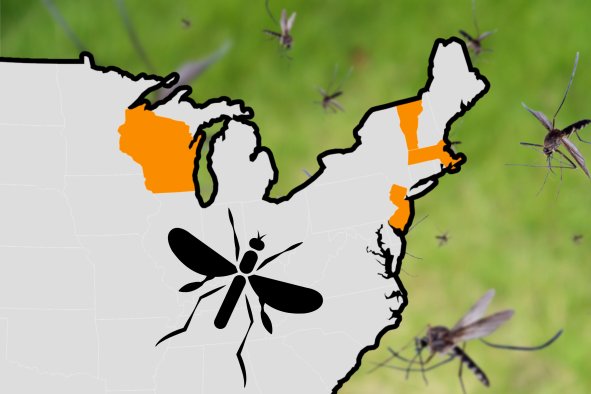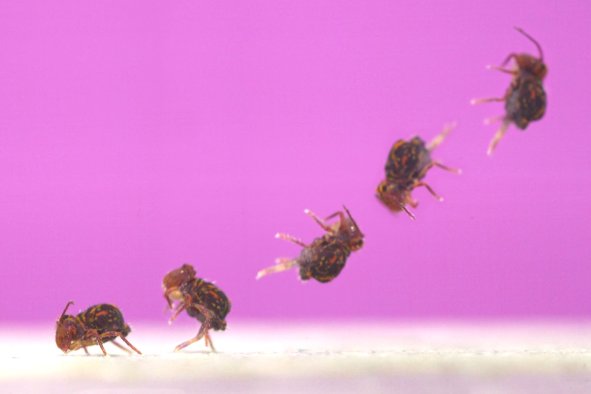Researchers have unearthed nearly 1,700 ancient virus species hidden within the glacial ice of the Himalayas.
These viruses, around three-quarters of which were previously unknown to science, were discovered thanks to scraps of viral DNA frozen in ice cores taken from the Guliya Glacier on the Tibetan Plateau, according to a new paper in the journal Nature Geoscience.
By analyzing the DNA of these ancient viruses, the researchers hope to better understand how viruses adapt to changing climates.
"Before this work, how viruses linked to large-scale changes in Earth's climate had remained largely uninvestigated," study co-author ZhiPing Zhong, a research associate at the Byrd Polar and Climate Research Center at The Ohio State University, said in a statement. "Glacial ice is so precious, and we often don't have the large amounts of material required for virus and microbe research."
According to the paper, the viruses came from across "nine time horizons, spanning three cold-to-warm cycles over the past 41,000 years." The Guliya Glacier, where the ice cores were sampled, is situated in the Himalayas in northwestern Tibet, nearly 4 miles above sea level.
Ancient viruses frozen in permafrost have been unearthed at other locations around the world, including Siberia. This has sparked fears that one of these viruses could infect humans as permafrost and glaciers around the world melt due to climate change.
"If amoeba viruses can survive that long in permafrost, this strongly suggests that animal/human-infecting ones could remain infectious in the same condition," Jean-Michel Claverie, a professor at Aix-Marseille University in France who led the study, previously told Newsweek. "In addition, we know that the DNA [of animal/human-infecting viruses] are detected in permafrost."
Thankfully, these ancient viruses likely infected bacteria rather than animals or humans.
According to the paper, this discovery reveals key details of how these ancient viruses adapted and evolved with significant changes to the climate. One of the viral communities they found in the ice cores dated to around 11,500 years ago when the climate was shifting from the cold of the Last Glacial Stage to the warmer Holocene epoch in which we currently reside.
"This at least indicates the potential connection between viruses and climate change," Zhong said.
The researchers also found that about a quarter of the viruses in the ice core overlapped with species found elsewhere.
"That means some of them were potentially transported from areas like the Middle East or even the Arctic," said Zhong.
By understanding how ancient viruses evolved in response to shifting climates, the researchers hope to better predict how our modern-day viruses will react to the encroaching effects of climate change in the coming years.
"To me, this science is a new tool that can answer basic climate questions that we couldn't have answered otherwise," study co-author Lonnie Thompson, a professor in earth sciences at Ohio State, said in the statement.
Researching the life frozen in glacial ice cores won't be possible forever for the same reason: The rate of glacial melt has increased significantly over the past century, with some glaciers in regions like the Himalayas, the Alps, and the Andes experiencing substantial losses. Himalayan glaciers melted 65 percent faster between 2010 and 2019 than between 2001 and 2010.
A 2023 report by the International Centre for Integrated Mountain Development (ICIMOD) found that by 2100, between 30 and 50 percent of Himalayan glacier volume may have melted away if the climate warms by between 1.5 and 2 degrees Celcius, while as much as 80 percent volume could be lost under a 4 degree Celcius temperature increase.
Therefore, researchers hope to gather as much data from these glaciers as possible while they still can.
"I'm optimistic about what can be done here, because if we work together, these techniques have much potential to help us start tackling a large array of scientific issues," said Thompson.
Do you have a tip on a science story that Newsweek should be covering? Do you have a question about viruses? Let us know via science@newsweek.com.
References
Zhong, Z.-P., Zablocki, O., Li, Y.-F., Van Etten, J. L., Mosley-Thompson, E., Rich, V. I., Thompson, L. G., & Sullivan, M. B. (2024). Glacier-preserved Tibetan Plateau viral community probably linked to warm–cold climate variations. Nature Geoscience, 1–8. https://doi.org/10.1038/s41561-024-01508-z
Disclaimer: The copyright of this article belongs to the original author. Reposting this article is solely for the purpose of information dissemination and does not constitute any investment advice. If there is any infringement, please contact us immediately. We will make corrections or deletions as necessary. Thank you.



